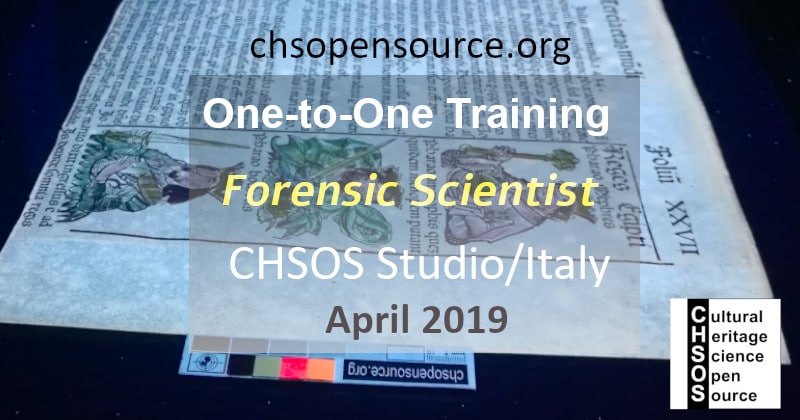
Completed 4-days one-to-one Training at the CHSOS Studio in Italy, April 2-5 for Jurian Hoogewerff, University of
Check out our Training Calendar for upcoming events.
Jurian Hoogewerff: forensic geochemist working in Australia. Much of his research and casework is about documenting
Jurian has been following CHSOS activities in our newsletter with great interest over the last 2 years, and he was very interested in our 4-day training program. A busy academic he could not participate in one of our organized courses and so he took a one-to-one program which we provide for busy professionals. Thanks for coming and sharing your expertise and point of view as a forensic scientist.
It has been so interesting to discuss with Jurian ( forensic scientist) our methods for Art Examination. We found many points in common. It was fascinating to see an art examination workflow as a crime scene 🙂
FIRST and SECOND DAY: technical Photography
Technical photography represents a collection of images realized with a modified digital camera sensitive to the spectral range (about 360-1100 nm). Different lighting sources and filters are used to acquire a selection of technical images, with each one providing different information about the object under examination.
THIRD DAY: Multispectral Imaging and Reflectance Spectroscopy
Multispectral Imaging is used to identify and map pigments in polychrome artworks, and to enhance the reading of faded historical documents. Conservators can use this technique to distinguish original
sections in paintings and select the proper conservation procedures.
Reflectance spectroscopy (RS) is a powerful portable technique for the identification of pigments.
An RS spectrum shows the ratio between the intensity of the reflected light and the incident light for each wavelength. The RS spectra can provide information useful for pigments identification.
[post-content post_name=1-ads/]
FOURTH DAY: practice

[post-content post_name=training-for-institutions/]










